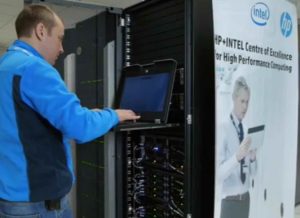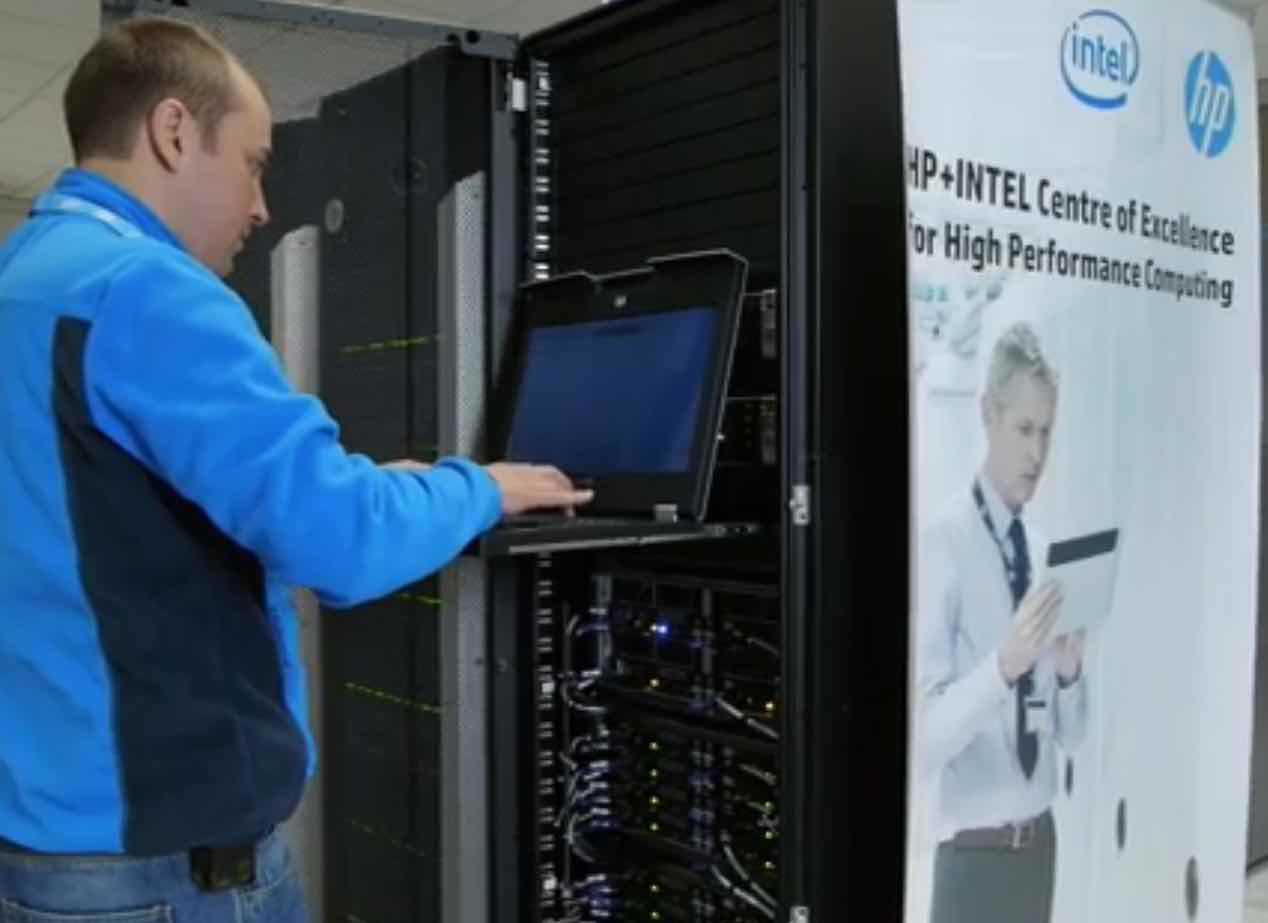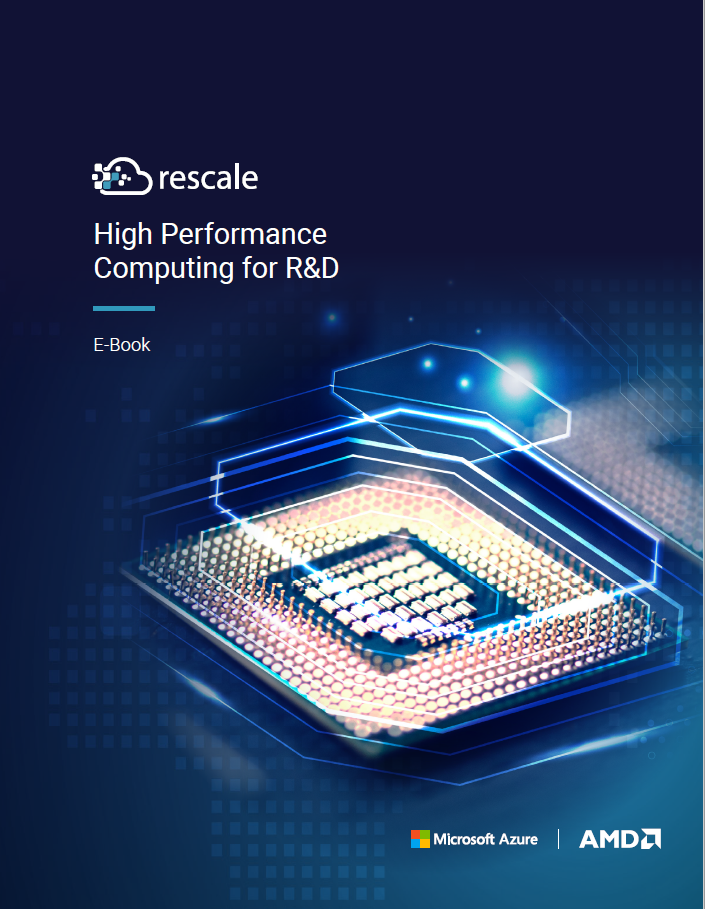 Intel and Hewlett Packard Enterprise (HPE) have recently created two new Centers of Excellence (CoE) to help customers gain hands-on experience with High Performance Computing (HPC). This plus collaboration with customers on implementing the latest technology solutions are highlights being celebrated by the two companies on the one-year anniversary of their alliance.
Intel and Hewlett Packard Enterprise (HPE) have recently created two new Centers of Excellence (CoE) to help customers gain hands-on experience with High Performance Computing (HPC). This plus collaboration with customers on implementing the latest technology solutions are highlights being celebrated by the two companies on the one-year anniversary of their alliance.
scaOver the last year, the Intel and HPE alliance developed from their common goal of making HPC more accessible to researchers, enterprises managing big data-driven tasks, and other companies requiring the highest levels of computational power. Rather than building solutions from the ground up, customers sought more turnkey HPC solutions which allowed them to benefit from the technology without needing to be experts in the computing infrastructure themselves.
Building an Alliance
With the computing expertise HPE and Intel share in the HPC space, the collaboration proved a natural fit. Over the last several years, Intel has invested heavily in what it calls their Intel Scalable System Framework (Intel SSF). Intel SSF represents a combination of new processors, storage, software stacks, and architecture which provide the engine behind HPC. While Intel is in a unique position to deliver these technologies, Intel SSF components represent only part of an HPC solution. Intel needed a partnering organization to take Intel SSF building blocks, create integrated HPC solutions, and offer implementation support to customers.
Intel’s Charlie Wuischpard, VP and GM, Data Center Frameworks Delivery Group, reiterates the importance of the collaboration. “As we were evolving and taking more of a systems-level view of High Performance Computing technologies, we needed an alliance that could deliver those technologies to market.”
With Intel SSF in hand, HPE integrated those technologies into the latest “Apollo” series HPC solutions. Combined with HPE’s existing customer support infrastructure, today’s HPC solutions are better integrated and easier for customers to implement.
Integrating technologies from both companies and delivering more powerful HPC systems requires frequent, hands-on collaboration. Bill Mannel, VP add GM, HPC and Big Data, HPE, notes, “Our Apollo product line focuses specifically on HPC and big data. We’ve been working weekly with Intel engineers to make sure we have integrated Intel Scalable System Framework in the best way possible.”
The Intel Xeon processor-based HPE Apollo 4500 specifically addresses storage and analytics workloads, supports Intel Omni-Path Architecture, and comes with the option for Intel Enterprise Edition for Lustre software.
Celebrating The Alliance’s First Anniversary
A lot can happen in a year. Intel and HPE have made significant advances since the announcement of their alliance at ISC 12 months ago.
First, in order to offer customers the greatest range of compatibility and ease of integration, HPE’s Apollo solutions are based around OpenHPC standards. Second, Intel® Enterprise Edition of Lustre* is now integrated into the Apollo 4520 HPE solution, helping customers like Calcul Québec optimize their HPC infrastructure. Additionally, Apollo 2000, 4000, and 6000 HPE solutions support Intel Omni-Path Architecture, providing 100GB fabric options for companies like Pittsburgh Supercomputing Center, utilizing HPC technologies to further their research and discovery efforts. Fourth, HPE also announced a new ProLiant XL260a server tray for Apollo 6000, supporting the newest Intel Xeon Phi processors. Finally, the server portfolio has been refreshed with the new Intel Xeon processor E5-2600 v4.
New HPE ProLiant XL260a server trays for the Apollo 6000 system are based on the Intel Xeon Phi processor and Intel Omni-Path Architecture to reduce latency, and increase bandwidth and performance.
Additional investments the alliance have brought to market include trade and match reference architecture, Scality risk compliant archive reference architecture, ANSYS manufacturing reference architecture, and Hadoop* big data reference architecture.
Combined, this body of work represents significant progress in the development of better HPC solutions. With the needed technology in place, Intel and HPE’s current focus is ensuring customers, ISVs, and solution providers have the tools and support to implement HPC technology, and are getting the most from their investment.
Better Together
Together, the alliance plans to expand their efforts on solutions tailored for vertical industries like financial services, life sciences, oil, and gas which require HPC solutions. To assist in this endeavor, HPE and Intel have enlisted the help of industry and subject matter experts (SMEs) working to build solutions that serve customers of all sizes. By identifying the largest challenges vertical industries face, and carefully analyzing them, solutions can be architected to overcome those barriers.
As Mannel characterizes the Intel-HPE alliance, “One of the key parts of the alliance is building solutions. We have focused on particular verticals and scenarios because we want to build solutions that are meaningful for customers.” Elaborating, he notes, “It’s really about making more customers capable of getting value out of high performance computing. We need to help them get there.”
To help address that goal, the alliance collaborated on several areas of HPC customer support and technology development. First, in order for customers to gain hands-on experience with HPC, Intel and HPE created two new Centers of Excellence (CoE). Located in Houston, Texas, and Grenoble, France, the two CoEs offer an HPC simulation environment that allows customers unfamiliar with HPE to experience the technology with guidance from implementation experts. Combined, the capabilities of SMEs and CoEs come together to bring customers significant value.
Intel’s Wuischpard reiterates the intended value of CoEs for customers, “The CoE’s provide us the ability to demonstrate all of our technologies working together, and HPC experts are onsite to ensure customers get the most from our technologies.”
The CoEs have proven themselves valuable to customers already. For example, British Petroleum (BP) has the opportunity to work with onsite engineers, architects, and technologists who share practical HPC expertise. Through this interaction at CoE sites, customers learn how best to implement an HPC solution, and get the most from it.
Those customers already familiar with HPC implementations can also benefit from CoEs. Each CoE location’s infrastructure can be configured to simulate entire HPC solutions. Terratec, a customer based in France, faces the challenge of combining HPC computing with big data. With the help of onsite CoE expertise, an HPC system can be architected, configured, tested, and optimized before Terratec implements that solution in a production environment.
For HPC customers unable to utilize the CoEs, Intel and HPE offer additional resources. Both companies commit their cumulative knowledge to support customers seeking assistance architecting and implementing HPC solutions.
Supplementing these new customer support activities, several technological advancements are now available with even more under development. Currently, Intel® SSF is comprised of new Intel Xeon and Intel Xeon Phi processors, the Intel HPC Orchestrator, and Intel Omni-Path Architecture fabric. These elements work in unison with HPE’s latest Apollo HPE 2000, 4000, 6000 systems.
These technological advancements help address the needs of customers like the Pittsburgh Supercomputing Center (PSC) which has specific requirements for an HPC solution. Working in the science field, PSC needs an implementation capable of solving large computational problems. Together, Intel and HPE formed a solution for PSC, involving the first large scale Intel Omni-Path Architecture Fabric implementation. With the aid of the CoE’s onsite team, the solution was installed and in production within a week.
In the future, the alliance plans to further differentiate their HPC solutions through additional advancement in reference architecture.
Looking Ahead
Recognizing the opportunity for HPC growth, industry analysts share their perspective on the collaborative HPE-Intel solution-oriented approach. “As the global HPC market leader, HPE is upping the ante with new additions to its already-large HPE Apollo portfolio of purpose-built solutions,” said Steve Conway, Research Vice President in IDC’s High Performance Computing group. “These innovative solutions aim to accelerate HPC adoption by organizations of all sizes and segments by enabling faster time to value and increased competitive differentiation through better parallel processing performance, along with reduced complexity and deployment time.”
Today, HPE is the HPC segment leader with about 35% of the worldwide market. Still, a sizable opportunity exists to expand the market and provide customers an even better HPC experience. While the alliance’s HPC solutions have made significant strides in addressing the needs of customers today, neither HPE nor Intel plan to rest on their laurels. Looking to the alliance with an optimistic future, Wuischpard says, “We’re not stopping here, this is just one step in the journey together.”
As Mannel sums up the combined efforts of HPE and Intel, “We see our alliance as a long term collaboration. HPE and Intel will continue bringing customers value-added solutions to further their research, their discoveries, and their business outcomes. Ultimately, this will help more customers enjoy the benefits of HPC and grow the industry.”




